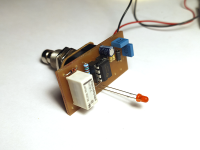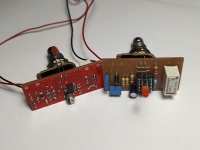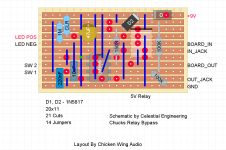Chuck D. Bones
Circuit Wizard
What are the pros/cons/differences between this and the PPCB circuit? Both are past my understanding of circuits, so other than the lack of a need of a regulator, I'm not sure of the differences.
The PPCB board is good if you want to power the relay controller with something higher than +9V.
The upside to my design is increased margin on the relay drive current by
a) Powering the 555 from +9V which gives it more current drive capability,
b) Using the DISCHARGE pin to drive the relay because it has a greater current capability than the OUT pin,
c) Powering the relay coil from +9V and using a series dropping resistor to guarantee that we always get the desired coil current in a 5V coil.
We get the added bonus that the circuit is easily tweaked to drive a 4.5V, 5V, 6V or 9V relay coil simply by changing the dropping resistor.
The downside to my design is that you cannot power the pedal with +18V because anything over +16V will overstress the 555. Not really a big deal because pedals that need +18V or higher internally usually contain a charge pump to make the higher voltage from +9V.
Aren’t you describing most of the pedal industry there?
Touché





